Hibernation is More Than an Afternoon Nap
Hibernation is More Than an Afternoon Nap
By the Site Ecology Team (SET) and Wildlife and Industry Together (WAIT)
January 23, 2016
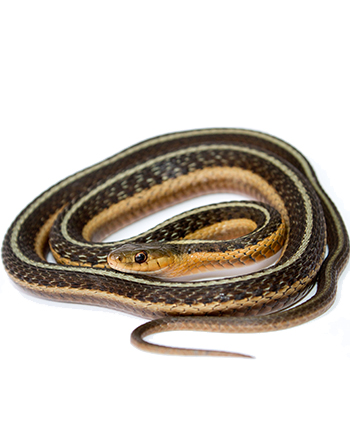
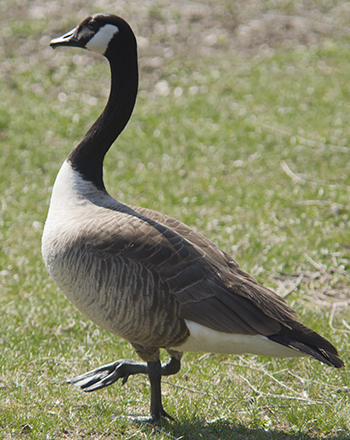
Adults often fear talking to their young about the birds and the bees and put it off as long as possible. That discussion is relatively easy and un-complicated, but peers may have their own discussions first. A greater challenge would be explaining “true” hibernation to an inquiring mind.
We will attempt to explain how hibernation differs among animals and determine who participates and who doesn’t. With the unseasonable warm temperatures this December, this story may be subject to modification any day now. The following is the truest story that you’ll ever be asked to believe. Names and faces have been changed but not the facts or relationships.
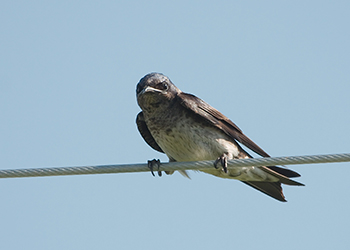
One day this past fall, a young garter snake was told by Ms. Canada Goose (CG) that the days were getting shorter and cooler and that he should go hibernate. Ms. CG was getting ready to fly south to Florida or maybe Northern Mexico with her family. Garter was confused and didn’t know what Ms. CG meant. He tried to look up hibernation dates in the NC Wild Critter Almanac for Zones 7 and 8, but found no reference to garter snake hibernation.
Garter couldn’t stand not knowing what Ms. CG meant. Robins could be seen chirping their goodbyes. It must be very important. He had to find out what snakes should do.
He noticed that a colony of Purple Martins were closing up their dwelling. “Are you getting ready to hibernate?” Garter asked. “No” came the answer, “our offspring have fledged and we’re preparing to journey to the Amazon Basin for the winter”. “We’ll be back in the spring”, said another. “The goose told me to hibernate and I don’t know how.” whimpered Garter. The Purple Martins tried to reassure him, “The geese don’t know about hibernation for they migrate down south or put on extra down to endure the cold”. “Go ask someone who has fur or hair”, came the suggestion.
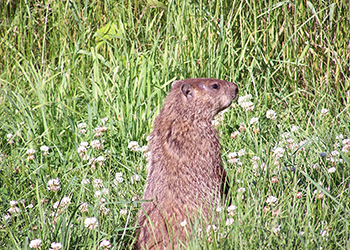
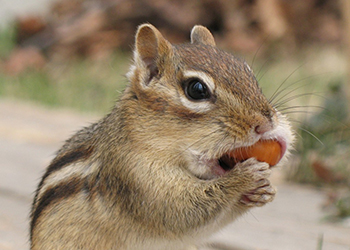
He soon saw Mrs. Woodchuck (Mrs. W) sunning on the lawn. Seeing that Mrs. W was very down-to-earth, she should be able to dig into her wealth of knowledge and explain hibernation. He asked her to tell him about hibernation. She told Garter that if an animal were going to truly hibernate, it was important to eat a lot of food during the summer to get fat. He might have to sleep for months without eating, so it would be good to store extra food in case he awoke and was hungry. He’d also need to find a warm, sheltered place that stayed above freezing. She told him that some animals like, groundhogs, bears, and skunks, don’t deep sleep continuously, but awaken periodically to eat, move around, and go to the potty. She then explained that truly hibernating animals stay asleep all winter to protect themselves from the extreme cold. Their heart and breathing rates go down as well as their body temperature. They require very little energy during that time, like being in suspended animation. Garter was puzzled, for he ate when hungry but never ate to sleep. This didn’t sound like a great idea to him, and it was still warm outside. True, he’d be a little sluggish on a cool morning but soon became very active when the sun came up. Were there any other choices he might consider?
So, off he went to find an eastern chipmunk (ECM), for maybe the chipmunk had a better solution than sleeping the time away. ECM was collecting food and her story was basically the same. Getting ready to hibernate is hard work for small animals. If she awoke and moved around, she’d want something to eat. Like the woodchuck, she had no intention of sleeping constantly. Denning with a carnivore wasn’t a good idea anyway. She suggested speaking with a bat, because they were small and one had been seen on campus.
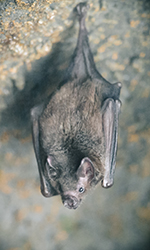
The little brown bat said she usually spent the winter in the protection of cracks or crevices, a cave if available, or even in a human’s house or building. She wanted to check out the new house near the Memorial Garden. Some bats will winter together to keep warmer, but they risk catching the fungus white-nose syndrome spreading across North America. The news reports were very scary. She might go it alone, but some other bats wanted to migrate. Garter didn’t want to get sick and went down to Discovery Lake.
Garter was still uncertain, so off he went for yet another opinion. Soon he came upon a turtle and tortoise by Discovery Lake. Garter asked if they knew about hibernating. To his surprise, both said yes and that was the way they survived cold weather. They preferred to spend the winter near the lake. The turtle said the bottom of the lake was an ideal place to stay, buried in the mud. What about drowning down there? The turtle explained that he had a special gland at the base of his tail that allowed him to absorb oxygen from the cold water, so he didn’t have to surface. Mister Tortoise said no way could he do that, for he would die for sure. To stay warm, he excavates a cavity in dry mulch or forest debris where he stays buried during the cold. Both admitted that they “power down”, with a metabolism and body temperature drop that approaches ambient and they become dormant (cessation of activity) until warm weather.


They told Garter that since the amphibians and insects were also cold-blooded like the reptiles, they all hibernated or brumated (a term applied to this group of animals) during winter. It would be hard to find enough food if you didn’t hibernate when your food source hibernated!
It’s beginning to make more sense. If I’m a snake, therefore a reptile, then I should brumate to get through the winter, but where? I’m more like the tortoise than like the other animals, but what do snakes do? He hadn’t found another snake to ask.
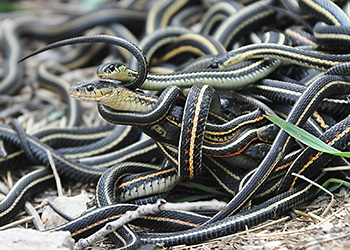
Garter discovered a black rat snake but he was too big and the copperhead was too eager to have Garter come into his hiding place. Different species of snakes have been known to winter together, but Garter had an uneasy feeling about these arrangements. Finally, Garter found some other Garter snakes. They asked where he was staying and invited Garter to den with them. He was relieved to learn that the garter snakes were usually the last to seek shelter in the fall and among the first to emerge in the spring. Even on December 25, there was a garter snake crawling around in Cary, NC. Another advantage of denning together as Garter would find out is playing snake ball twister. Plus, when it’s time to emerge in the spring, you don’t have to go far for a stimulating exit (SEX).
Now Garter knows what to do when the weather turns cool and it’s time to seek shelter for the winter. Hopefully, now you also know and will allow the wildlife to proceed undisturbed during this period.



